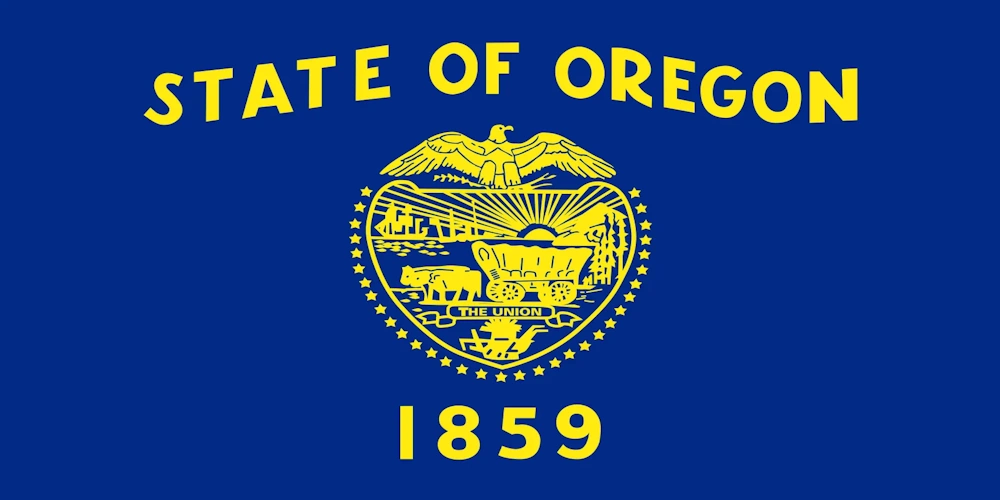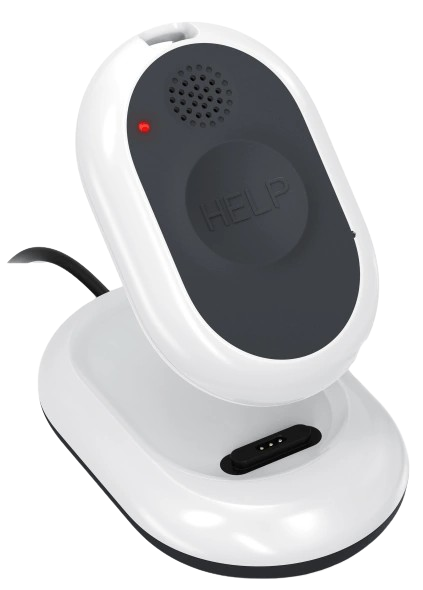Oregon’s diverse economy includes industries such as forestry, agriculture, healthcare, manufacturing, and technology—many of which rely on employees working alone or in remote areas. These lone workers may face elevated risks due to the lack of immediate assistance in the event of an emergency. Employers in Oregon must take proactive steps to protect lone workers and ensure their safety on the job.
Unlike many states, Oregon operates its own OSHA-approved occupational safety and health plan through Oregon OSHA, a division of the Oregon Department of Consumer and Business Services (DCBS). This agency oversees workplace safety laws within the state and enforces rules that must be at least as effective as those set by federal OSHA.
On This Page
Our Guide To Lone Worker Safety Policy And Legislation In Oregon
Oregon OSHA enforces a broad range of standards covering general workplace safety, hazard communication, fall protection, and emergency planning. While the state does not have a standalone regulation specifically for lone workers, many of its safety standards include provisions that become especially critical when work is done in isolation.
For example, Oregon OSHA’s requirements around confined spaces, lockout/tagout procedures, and workplace violence prevention are especially relevant to lone work situations. Oregon OSHA also encourages employers to conduct regular risk assessments and implement controls that account for employee isolation, including emergency communication and monitoring systems.
Employers can access resources and assistance from Oregon OSHA’s technical specialists, education centers, and consultation services to build effective lone worker safety programs.
How Oregon Defines A Lone Worker
While Oregon OSHA does not formally define the term “lone worker,” it is commonly understood to mean an individual who works in isolation—either physically separated from others or without immediate supervision.
In Oregon, lone workers may include:
- Forestry and logging workers
- Agricultural field laborers and equipment operators
- Healthcare professionals conducting home visits
- Overnight custodial and maintenance staff
- Utility and telecommunications field technicians
- Delivery drivers and warehouse personnel
These roles can carry increased risk due to physical isolation, exposure to environmental hazards, or the lack of immediate access to emergency aid.
Employing A Lone Worker In Oregon
Employers in Oregon have a duty to identify and mitigate the risks faced by employees who work alone. Even without a lone worker-specific rule, the general duty to provide a safe and healthful workplace still applies under Oregon OSHA regulations.
Recommended best practices for managing lone worker safety in Oregon include:
- Risk Assessments: Identify job-specific hazards for isolated work scenarios.
- Emergency Protocols: Create written plans for responding to medical, environmental, or safety incidents.
- Communication Tools: Equip lone workers with mobile devices, radios, or safety monitoring apps.
- Check-In Procedures: Establish regular check-in schedules or use automated monitoring platforms.
- Training and Documentation: Educate lone workers about hazard awareness, emergency procedures, and how to use safety tools.
Employers are also encouraged to document these efforts as part of their overall workplace safety program to support compliance and incident prevention.
Learn How You Can Protect Your Employees With Loneworker.com

With Loneworker.com you can be equipped with the knowledge and the means to protect your employees and protect your business. Contact us today to learn more about how Loneworker.com can protect you and your employees.
How The Safe Lone Worker App Can Protect Oregon Lone Workers And Employers
The Safe Lone Worker app offers an effective solution for Oregon employers who need to monitor and protect employees working in isolation. With features such as automated check-ins, real-time location tracking, fall detection, and emergency alerts, the app improves both safety and accountability.
Whether your workers are in remote forests, agricultural fields, healthcare settings, or industrial sites, this tool can help meet Oregon OSHA’s expectations for risk management and emergency preparedness.
Oregon Lone Worker Policies
Oregon administers its own OSHA-approved state plan through Oregon OSHA, which enforces health and safety regulations across both public and private sector workplaces. While Oregon does not have a specific lone worker rule, employers are still required to identify risks and implement appropriate protections for employees who work without direct supervision.
This guide is meant for general reference. Employers should consult Oregon OSHA for the most current information and legal requirements.
Oregon Lone Worker Resources
OHS Contact Centre
- 1-866-415-8690
CDC / NIOSH
- 800-232-4636

Affordable Monitoring For Lone Workers In Oregon

-
 Monitoring Your Employees' Safety
Monitoring Your Employees' Safety
-
 GPS Tracking And Monitoring
GPS Tracking And Monitoring
-
 Man Down Panic Alerts
Man Down Panic Alerts
-
 24/7 Protection Anywhere
24/7 Protection Anywhere
Lone Worker Legislation
Lone Worker Safety Policies And Legislation By State
-
 Alabama State Safety Policies And Legislation
Alabama State Safety Policies And Legislation
-
 Alaska State Safety Policies And Legislation
Alaska State Safety Policies And Legislation
-
 Arizona State Safety Policies And Legislation
Arizona State Safety Policies And Legislation
-
 Arkansas State Safety Policies And Legislation
Arkansas State Safety Policies And Legislation
-
 California State Safety Policies And Legislation
California State Safety Policies And Legislation
-
 Colorado State Safety Policies And Legislation
Colorado State Safety Policies And Legislation
-
 Connecticut State Safety Policies And Legislation
Connecticut State Safety Policies And Legislation
-
 Delaware State Safety Policies And Legislation
Delaware State Safety Policies And Legislation
-
 Florida State Safety Policies And Legislation
Florida State Safety Policies And Legislation
-
 Georgia State Safety Policies And Legislation
Georgia State Safety Policies And Legislation
-
 Hawaii State Safety Policies And Legislation
Hawaii State Safety Policies And Legislation
-
 Idaho State Safety Policies And Legislation
Idaho State Safety Policies And Legislation
-
 Illinois State Safety Policies And Legislation
Illinois State Safety Policies And Legislation
-
 Indiana State Safety Policies And Legislation
Indiana State Safety Policies And Legislation
-
 Iowa State Safety Policies And Legislation
Iowa State Safety Policies And Legislation
-
 Kansas State Safety Policies And Legislation
Kansas State Safety Policies And Legislation
-
 Kentucky State Safety Policies And Legislation
Kentucky State Safety Policies And Legislation
-
 Louisiana State Safety Policies And Legislation
Louisiana State Safety Policies And Legislation
-
 Maine State Safety Policies And Legislation
Maine State Safety Policies And Legislation
-
 Maryland State Safety Policies And Legislation
Maryland State Safety Policies And Legislation
-
 Massachusetts State Safety Policies And Legislation
Massachusetts State Safety Policies And Legislation
-
 Michigan State Safety Policies And Legislation
Michigan State Safety Policies And Legislation
-
 Minnesota State Safety Policies And Legislation
Minnesota State Safety Policies And Legislation
-
 Mississippi State Safety Policies And Legislation
Mississippi State Safety Policies And Legislation
-
 Missouri State Safety Policies And Legislation
Missouri State Safety Policies And Legislation
-
 Montana State Safety Policies And Legislation
Montana State Safety Policies And Legislation
-
 Nebraska State Safety Policies And Legislation
Nebraska State Safety Policies And Legislation
-
 Nevada State Safety Policies And Legislation
Nevada State Safety Policies And Legislation
-
 New Hampshire State Safety Policies And Legislation
New Hampshire State Safety Policies And Legislation
-
 New Jersey State Safety Policies And Legislation
New Jersey State Safety Policies And Legislation
-
 New Mexico State Safety Policies And Legislation
New Mexico State Safety Policies And Legislation
-
 New York State Safety Policies And Legislation
New York State Safety Policies And Legislation
-
 North Carolina State Safety Policies And Legislation
North Carolina State Safety Policies And Legislation
-
 North Dakota State Safety Policies And Legislation
North Dakota State Safety Policies And Legislation
-
 Ohio State Safety Policies And Legislation
Ohio State Safety Policies And Legislation
-
 Oklahoma State Safety Policies And Legislation
Oklahoma State Safety Policies And Legislation
-
 Oregon State Safety Policies And Legislation
Oregon State Safety Policies And Legislation
-
 Pennsylvania State Safety Policies And Legislation
Pennsylvania State Safety Policies And Legislation
-
 Rhode Island State Safety Policies And Legislation
Rhode Island State Safety Policies And Legislation
-
 South Carolina State Safety Policies And Legislation
South Carolina State Safety Policies And Legislation
-
 South Dakota State Safety Policies And Legislation
South Dakota State Safety Policies And Legislation
-
 Tennessee State Safety Policies And Legislation
Tennessee State Safety Policies And Legislation
-
 Texas State Safety Policies And Legislation
Texas State Safety Policies And Legislation
-
 Utah State Safety Policies And Legislation
Utah State Safety Policies And Legislation







